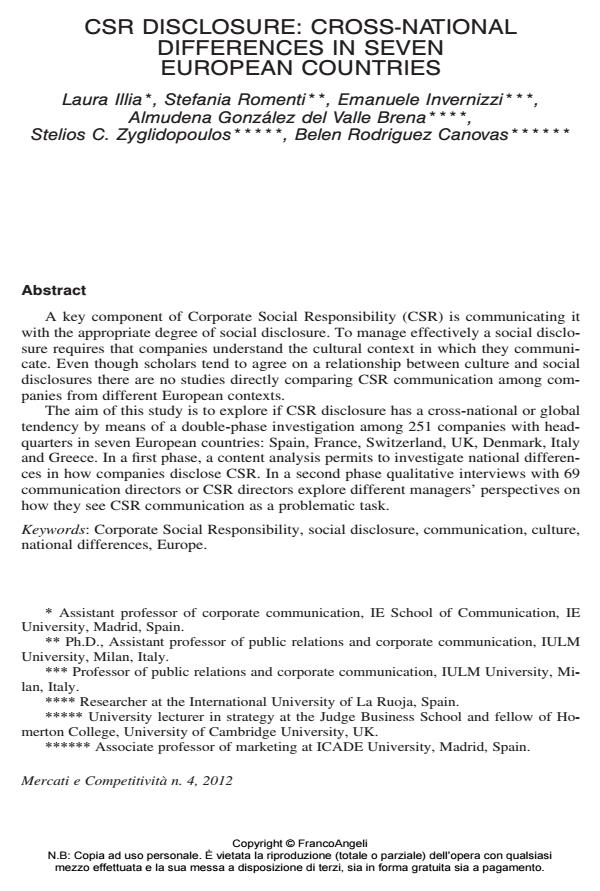CSR disclosure: cross-national differences in seven european countries
Journal title MERCATI E COMPETITIVITÀ
Author/s Laura Illia, Stefania Romenti, Emanuele Invernizzi, Almudena Gonzàlez del Valle Brena, Stelios C. Zyglidopoulos, Belen Rodriguez Canovas
Publishing Year 2013 Issue 2012/4
Language English Pages 24 P. 123-146 File size 515 KB
DOI 10.3280/MC2012-004008
DOI is like a bar code for intellectual property: to have more infomation
click here
Below, you can see the article first page
If you want to buy this article in PDF format, you can do it, following the instructions to buy download credits

FrancoAngeli is member of Publishers International Linking Association, Inc (PILA), a not-for-profit association which run the CrossRef service enabling links to and from online scholarly content.
A key component of Corporate Social Responsibility (CSR) is communicating it with the appropriate degree of social disclosure. To manage effectively a social disclosure requires that companies understand the cultural context in which they communicate. Even though scholars tend to agree on a relationship between culture and social disclosures there are no studies directly comparing CSR communication among companies from different European contexts. The aim of this study is to explore if CSR disclosure has a cross-national or global tendency by means of a double-phase investigation among 251 companies with headquarters in seven European countries: Spain, France, Switzerland, UK, Denmark, Italy and Greece. In a first phase, a content analysis permits to investigate national differences in how companies disclose CSR. In a second phase qualitative interviews with 69 communication directors or CSR directors explore different managers’ perspectives on how they see CSR communication as a problematic task.
Keywords: Corporate Social Responsibility,
Laura Illia, Stefania Romenti, Emanuele Invernizzi, Almudena Gonzàlez del Valle Brena, Stelios C. Zyglidopoulos, Belen Rodriguez Canovas, CSR disclosure: cross-national differences in seven european countries in "MERCATI E COMPETITIVITÀ" 4/2012, pp 123-146, DOI: 10.3280/MC2012-004008